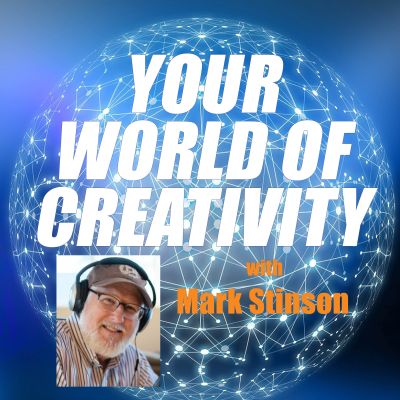On YOUR WORLD OF CREATIVITY, best-selling author and global brand innovator, Mark Stinson introduces you to some of the world’s leading creative talent from publishing, film, animation, music, restaurants, medical research, and more. In every episode, you'll discover: - How to tap into your most original thinking. - Inspiration from the experts’ own experience. - Specific tools, exercises, and formulas to organize your ideas. - And most of all, you’ll learn how to make connections and create opportunities to publish, post, record, display, sell, market, and promote your creative work. Listen for the latest insights for creative people who want to stop questioning themselves and overcome obstacles to launch their creative endeavors out into the world. Connect with Mark at www.Mark-Stinson.com
https://www.mark-stinson.com
episode 248: Jonathan Knight, Head of Games at The New York Times
Exploring the World of Digital Puzzle Games with Jonathan Knight, Head of Games at The New York Times
In this episode, host Mark Stinson sits down with Jonathan Knight, the Head of Games at The New York Times, to delve into the world of digital puzzle games. They discuss the Times' foray into gaming, the importance of games in the overall growth strategy of the paper, and the creative development process behind their popular puzzle games.
Jonathan has been working in the Computer and Video Game industry for over 25 years,
beginning as a Producer at Activision, and having worked as an Executive Producer or
GM/Studio Head at major publishers including EA, Zynga, and Warner Bros. Interactive. He has
been a production or creative leader on a number of major game franchises, including The
Sims, Harry Potter: Wizards Unite, The Simpsons Game, FarmVille, Words With Friends,
Wolfenstein, and DC Comics. At EA, he was the creative force behind the blockbuster game
Dante’s Inferno, overseeing the game’s story, development, and trans-media projects, including
a comic book series, an animated feature, and the action figure.
Jonathan lives in California, and is currently the GM of Games for The New York Times, operating and empowering the team that brings daily joy to puzzle solvers with games like Wordle, Spelling Bee, and the legendary New York Times Crossword.
Key Points:
1. The New York Times and Puzzle Games:
- Knight explains that the New York Times offers a collection of digital puzzle games alongside their renowned crossword puzzle.
- The crossword puzzle has been a staple since 1942 and has transitioned to digital platforms.
- Additional games like Spelling Bee and Wordle have been introduced, with Wordle becoming an internet sensation.
- The New York Times aims to provide engaging and human-crafted puzzles on a daily basis.
2. Games as an Essential Part of the New York Times:
- Knight acknowledges that some may find it surprising that games play an important role at the New York Times.
- The organization has made investments in the games business, including a separate subscription that offers games alongside other New York Times products.
- Games serve as a distraction from the news, attracting and retaining subscribers who engage with both the news and games offerings.
3. Games and Subscriber Retention:
- Knight emphasizes that games contribute to subscriber retention at the New York Times.
- Subscribers who engage with both news and games have the highest long-term retention rates.
- The daily habit of playing games, such as solving puzzles, creates ongoing engagement and value for subscribers.
4. Creative Development and the World of Wordle:
- Knight discusses the unique acquisition of Wordle, a viral internet sensation.
- Wordle was initially created by an engineer named Josh Wardle and caught on rapidly, eventually leading to its acquisition by the New York Times.
- The New York Times' creative development process involves internal prototyping and a green light process to determine the viability of new ideas.
- The team continually works to improve existing games and keep them fresh, ensuring engagement and satisfaction for players.
5. Balancing Business and Creativity:
- Knight reflects on his previous experiences in the gaming industry, including working on major franchises like The Simpsons and Harry Potter.
- Developing games based on licensed properties presents different challenges compared to creating original IP.
- The New York Times Games team focuses on the audience and the meaningful impact their games have on people's lives, which fuels their creative drive.
Conclusion:
Knight highlights the New York Times' focus on its games app, upcoming updates, and new game releases. The team is dedicated to maintaining the quality of their core puzzle offerings while also exploring new ideas and engaging with their audience in innovative ways.
Key Quotes from Jonathan Knight:
- "We have a collection of digital puzzle games. They're human-crafted people make these puzzles every day for you to solve."
- "Games are a distraction from the news. They're not the news. We hope that people come for the news and stay for the games."
- "When people subscribe to the New York Times and they engage with both news and games, their long-term subscriber retention is the highest of any of our product combinations."
- "Millions of people are playing your game. Millions of people are solving the Wordle this morning. That's what keeps you going. It's important. These are important things in people's lives. It's meaningful."
